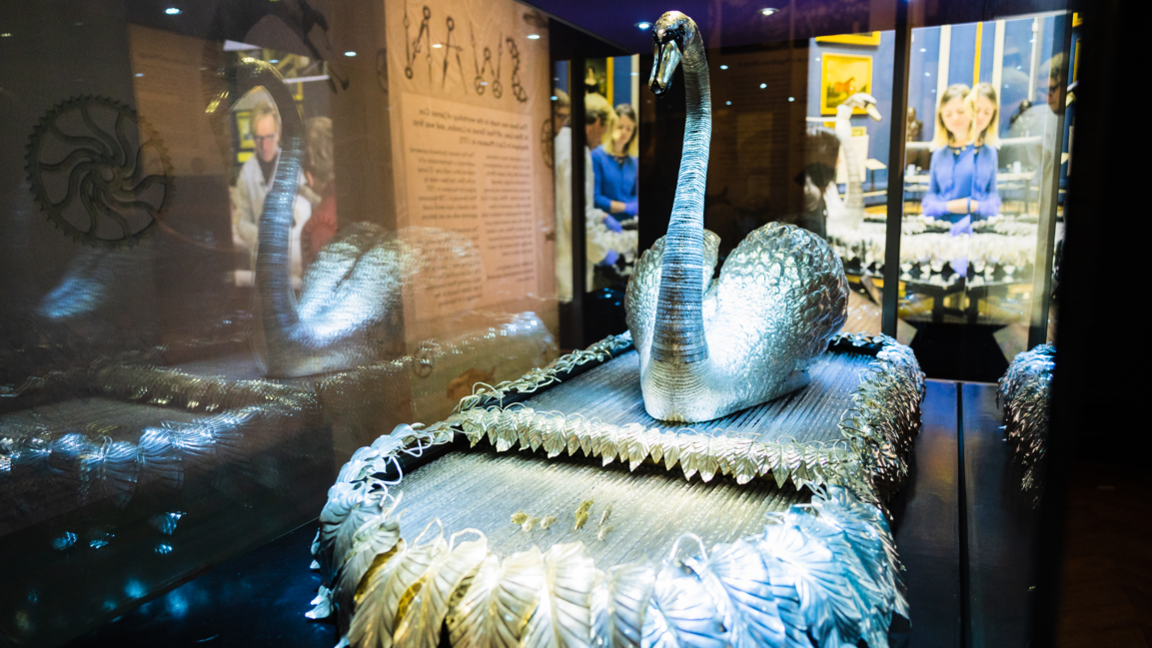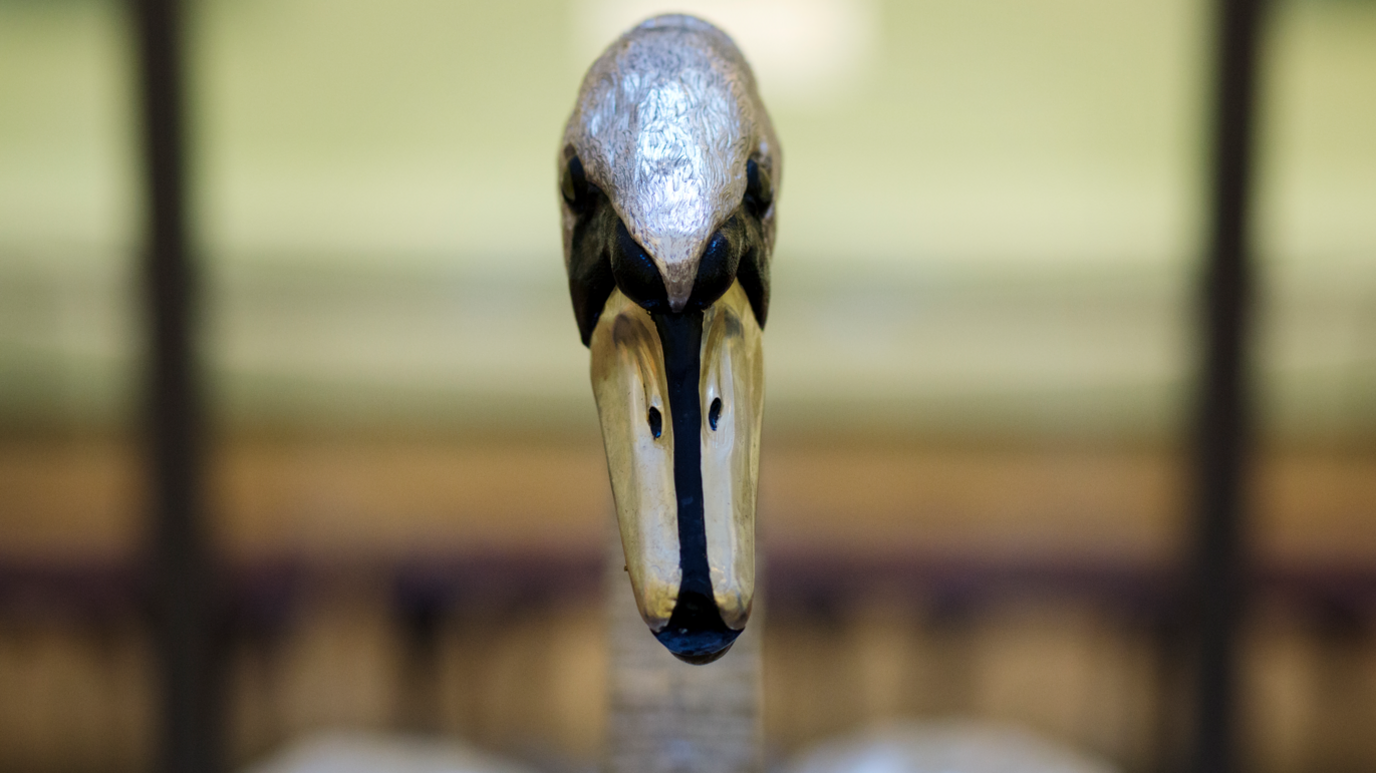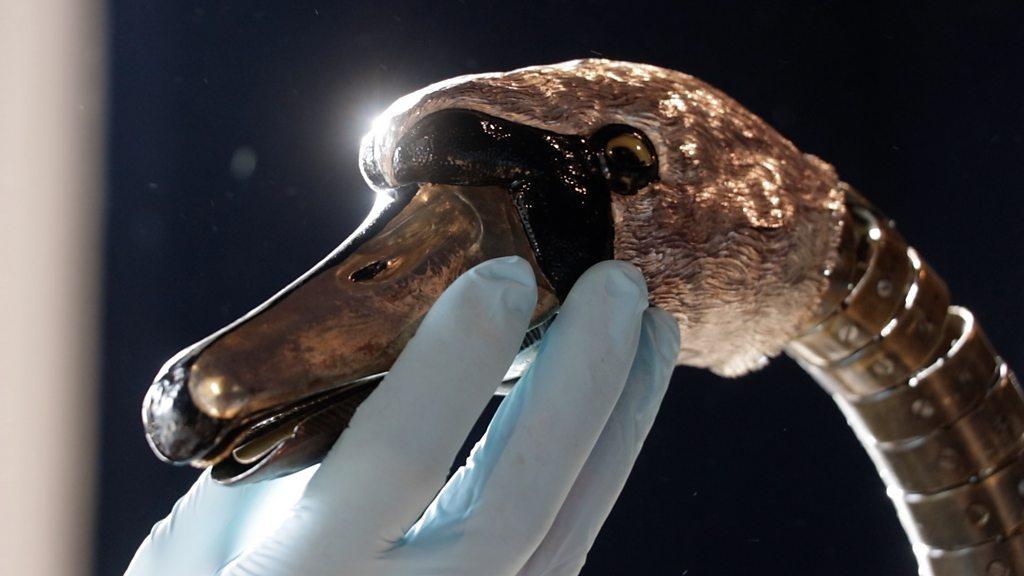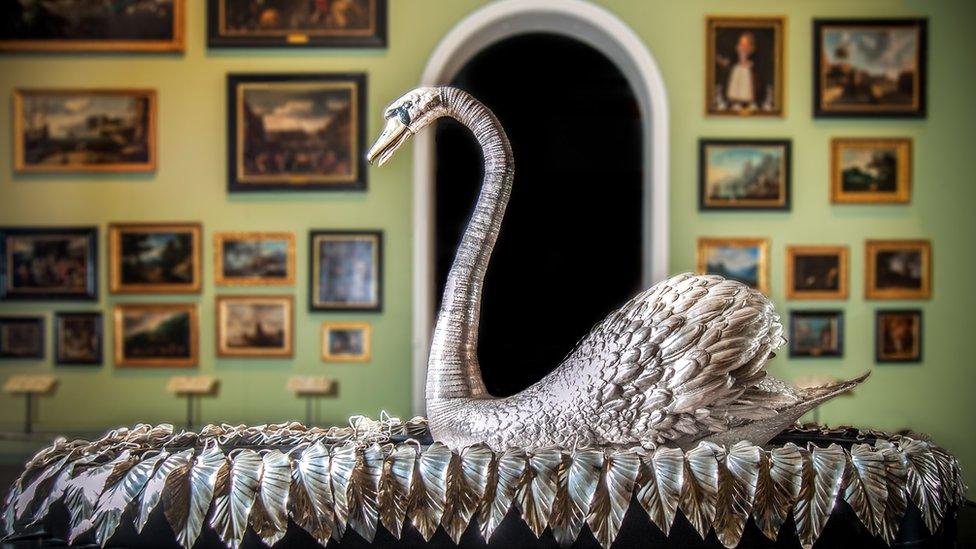Hopes swan will perform again after £20,000 raised

The swan was featured in a Mark Twain book
- Published
An 18th Century automated swan could soon perform for the first time since the pandemic after more than £20,000 was raised towards a conservation project.
The Silver Swan, at the Bowes Museum in County Durham, needed "complex" repairs after the automaton seized up during lockdown.
The museum secured a grant from the National Heritage Lottery, but had to raise at least £18,000 for the restoration work.
Museum director Hannah Fox said people's generosity had been "truly inspiring".
The Silver Swan is a life-size, solid silver replica of a female swan and is featured in Mark Twain's book The Innocents Abroad.
The author saw the structure at the 1867 Paris Exhibition.
The swan is operated by clockwork mechanisms and used to perform every day until 2020 when the Bowes Museum, in Barnard Castle, closed due to Covid-19.
Lack of use over lockdown impacted the structure and it needed "complex" repairs.

It is hoped the swan will perform again by the end of the year
This year's conservation project is focusing on the most urgent elements and costs £199,142.
The museum received a £146,324 grant from the National Heritage Lottery Fund towards the restoration and is continuing to fundraise for the remaining amount after surpassing its goal of £18,000.
Ms Fox said: “We are so excited and so grateful to all our supporters who helped us get over the line.
"Your generosity has been truly inspiring, each and every donation means we can successfully bring back the magic of the Silver Swan ensuring that she will continue to inspire generations to come.”
Cumbria Clock Company and the museum's in-house conservation team have been working to restore it. It is hoped the structure will be up and running by the end of the year.
The swan was made in the workshop of James Cox in London and was first shown in his museum in 1773. It has three clockwork mechanisms and contains more than 2,000 moving parts, with several thousand in its whole body.
Related topics
- Published20 October 2023

- Published15 May 2021
